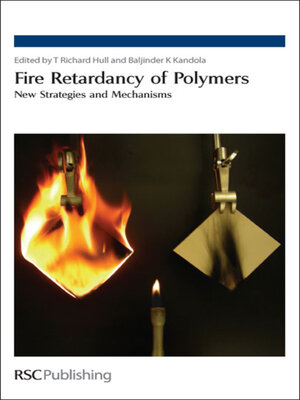
Sign up to save your library
With an OverDrive account, you can save your favorite libraries for at-a-glance information about availability. Find out more about OverDrive accounts.
Find this title in Libby, the library reading app by OverDrive.



Search for a digital library with this title
Title found at these libraries:
| Loading... |
Globally, fire retardants are needed to satisfy a multibillion dollar market. Fire retardancy of polymeric materials is an important component of fire safety. Fire retardants either reduce the likelihood of ignition and/or reduce the rate of flame spread and hence, escalation of fire. The need to comply with safety legislations forces industry to use fire retardants in materials in order to save lives. With growing consumer demands and new legislations, the development of new systems is an on-going process, which also involves understanding their mechanisms of action. This book covers the latest developments in fire retardant strategies including: " new fire retardant systems (including nanoparticulate fillers, sometimes combined with conventional fire retardants) " intumescent formulations and their recent applications in bulk polymers, fibres and textiles " test-methods for material flammability " material-specific aspects of combustion, smoke and toxicity. Fire retardant strategies covered, include the use of synergistic combinations of alumina with organoclay, organophosphorus compunds, silica and organosilicones, clay-phosphate combinations and a novel tecnhique for investigating fire rerardant behaviour. The section on nanoparticulate fillers includes an investigation on the effect of filler shape, the use of carbon nanofibres and nanotubes, the interpretation of nanocomposite behaviour in the cone calorimeter, and groundbreaking new research on the influence of rheological properties on burning behaviour. The coverage of fibres and textiles includes a discussion on trends in textile fire retardancy and flammability regulations, and some novel halogen-free approaches to fire retardancy of cellulose, acrylic and polypropylene textiles. Finally, the influence of fire retardants on fire toxicity is discussed in detail, followed by an investigation of the toxic products from burning fire retarded polymer nanocomposites. This book will update fire retardant materials' developers with latest in research and design of new fire retardant materials. It will also provide a snapshot of the state-of-the-art for a range of other groups including environmentalists looking for alternatives to brominated flame retardants and engineers needing to use fire safe materials in their projects.






